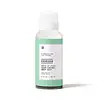What's inside
What's inside
 Key Ingredients
Key Ingredients

 Benefits
Benefits

 Concerns
Concerns

 Ingredients Side-by-side
Ingredients Side-by-side

Salicylic Acid 2%
MaskingWater
Skin ConditioningDipropylene Glycol
HumectantPolysorbate 20
EmulsifyingHamamelis Virginiana Water
AstringentGlycereth-7 Trimethyl Ether
Skin ConditioningGlycereth-26
HumectantMethyl Gluceth-20
HumectantSodium Hydroxide
BufferingGlycerin
HumectantPhenoxyethanol
PreservativePanthenol
Skin ConditioningSodium Benzoate
MaskingAllantoin
Skin ConditioningButylene Glycol
HumectantDisodium EDTA
Ethylhexylglycerin
Skin ConditioningDipotassium Glycyrrhizate
HumectantBenzoic Acid
MaskingSodium Hyaluronate
HumectantCitric Acid
BufferingMelaleuca Alternifolia Leaf Extract
PerfumingOenothera Biennis Oil
EmollientGlycyrrhiza Glabra Root Extract
BleachingSalicylic Acid 2%, Water, Dipropylene Glycol, Polysorbate 20, Hamamelis Virginiana Water, Glycereth-7 Trimethyl Ether, Glycereth-26, Methyl Gluceth-20, Sodium Hydroxide, Glycerin, Phenoxyethanol, Panthenol, Sodium Benzoate, Allantoin, Butylene Glycol, Disodium EDTA, Ethylhexylglycerin, Dipotassium Glycyrrhizate, Benzoic Acid, Sodium Hyaluronate, Citric Acid, Melaleuca Alternifolia Leaf Extract, Oenothera Biennis Oil, Glycyrrhiza Glabra Root Extract
Water
Skin ConditioningPropanediol
SolventButylene Glycol
HumectantGluconolactone
Skin ConditioningPotassium Hydroxide
BufferingGlycolic Acid
BufferingNiacinamide
SmoothingSalicylic Acid
MaskingZinc PCA
HumectantColloidal Silver
AntimicrobialMalachite Extract
AntioxidantCopper Tripeptide-1
Skin ConditioningGlycerin
HumectantTocopherol
Antioxidant1,2-Hexanediol
Skin ConditioningPolysorbate 20
EmulsifyingXanthan Gum
EmulsifyingEthylhexylglycerin
Skin ConditioningParfum
MaskingLinalool
PerfumingHexyl Cinnamal
PerfumingLimonene
PerfumingAlpha-Isomethyl Ionone
PerfumingWater, Propanediol, Butylene Glycol, Gluconolactone, Potassium Hydroxide, Glycolic Acid, Niacinamide, Salicylic Acid, Zinc PCA, Colloidal Silver, Malachite Extract, Copper Tripeptide-1, Glycerin, Tocopherol, 1,2-Hexanediol, Polysorbate 20, Xanthan Gum, Ethylhexylglycerin, Parfum, Linalool, Hexyl Cinnamal, Limonene, Alpha-Isomethyl Ionone
Ingredients Explained
These ingredients are found in both products.
Ingredients higher up in an ingredient list are typically present in a larger amount.
Butylene Glycol (or BG) is used within cosmetic products for a few different reasons:
Overall, Butylene Glycol is a safe and well-rounded ingredient that works well with other ingredients.
Though this ingredient works well with most skin types, some people with sensitive skin may experience a reaction such as allergic rashes, closed comedones, or itchiness.
Learn more about Butylene GlycolEthylhexylglycerin (we can't pronounce this either) is commonly used as a preservative and skin softener. It is derived from glyceryl.
You might see Ethylhexylglycerin often paired with other preservatives such as phenoxyethanol. Ethylhexylglycerin has been found to increase the effectiveness of these other preservatives.
Glycerin is already naturally found in your skin. It helps moisturize and protect your skin.
A study from 2016 found glycerin to be more effective as a humectant than AHAs and hyaluronic acid.
As a humectant, it helps the skin stay hydrated by pulling moisture to your skin. The low molecular weight of glycerin allows it to pull moisture into the deeper layers of your skin.
Hydrated skin improves your skin barrier; Your skin barrier helps protect against irritants and bacteria.
Glycerin has also been found to have antimicrobial and antiviral properties. Due to these properties, glycerin is often used in wound and burn treatments.
In cosmetics, glycerin is usually derived from plants such as soybean or palm. However, it can also be sourced from animals, such as tallow or animal fat.
This ingredient is organic, colorless, odorless, and non-toxic.
Glycerin is the name for this ingredient in American English. British English uses Glycerol/Glycerine.
Learn more about GlycerinPolysorbate 20 is made by combining ethoxylation of sorbitan, ethylene oxide, and lauric acid. It is a mild cleansing agent, surfactant, and emulsifier.
As a surfactant, it helps collect dirt and oils for washing. Emulsifiers prevent oils and water from separating.
Polysorbate 20 also adds scent to a product. Since it is made using sorbitol, it has a sweet scent. Sorbitol can also be found in fruits such as apples and peaches.
The lauric acid used to create Polysorbate 20 is often derived from coconuts.
Polysorbate 20 may not be fungal acne safe.
Learn more about Polysorbate 20Salicylic Acid (also known as beta hydroxy acid or BHA) is a well-known ingredient for treating skin that struggles with acne and clogged pores. It exfoliates both the skin's surface and deep within the pores to help clear out buildup, control oil, and reduce inflammation.
Unlike AHAs (alpha hydroxy acids), salicylic acid is oil-soluble. This allows it to penetrate into pores which makes it especially effective for treating blackheads and preventing future breakouts.
Salicylic acid is also known for its soothing properties. It has a similar structure to aspirin and can calm inflamed or irritated skin, making it a good option for acne-prone skin that is also sensitive.
Concentrations of 0.5-2% are recognized by the U.S. FDA as an over-the-counter topical acne product.
It can cause irritation and/or dryness if one's skin already has a compromised moisture barrier, so it's best to focus on repairing that before introducing this ingredient into your routine.
While salicylic acid does not increase sun sensitivity, it’s still important to wear sunscreen daily to protect your skin.
If you are looking for the ingredient called BHA or Butylated Hydroxyanisole, click here.
Learn more about Salicylic AcidWater. It's the most common cosmetic ingredient of all. You'll usually see it at the top of ingredient lists, meaning that it makes up the largest part of the product.
So why is it so popular? Water most often acts as a solvent - this means that it helps dissolve other ingredients into the formulation.
You'll also recognize water as that liquid we all need to stay alive. If you see this, drink a glass of water. Stay hydrated!
Learn more about Water